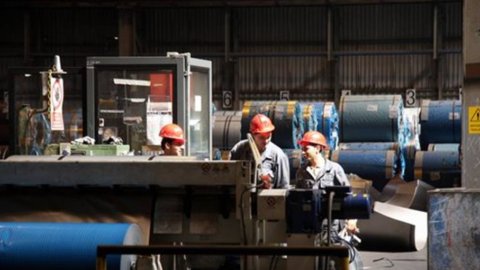In Italy, the mechanical sector is an important element in the panorama of the national manufacturing industry, both in terms of turnover generated and people employed, and as a growth driver of our economy. This sector is also destined to maintain a leading role as a development engine in the medium term, also thanks to growing interaction
with the electronics sector and the consequent development ofInternet of Things, the connection between machines, within the broader discourse ofIndustry 4.0.
The digitization of production processes and the development of digital technologies, which merge with the most advanced manufacturing,
in fact, these are the challenges that the Italian economy will have to face in order to continue to be competitive. In this scenario, there are many factors that are influencing the dynamics of the sector, both globally and nationally.
The analysis deals with multiple issues, from world trade to economic performance, from the production structure to innovation, going as far as the maximum level of detail available so as to bring out the many specificities and excellences present in our area.
In the global context, the weight that Italian mechanics has on world trade emerges, ranking fifth among the main exporters (in 2014), with a market share of approximately 7%, after Germany, China, the United States and Japan. However, our country stands out in some productions, where it ranks first in terms of market share, such as in machines for metallurgy and those for the food, beverage and of tobacco.
From the analysis of the outlet markets, however, another characteristic trait of Italian mechanical production emerges: the high level
geographical diversification of exports compared to the main competitors, particularly evident for producers of machinery for the food, beverage and tobacco industries.
As emerges from the analysis of world trade, Italy and Germany are the main players. The two production models differ not only in company size, but also in production specialisation. In Italy, like the manufacturing sector, small enterprises (between 0-49 employees) prevail in most segments of the mechanical sector, with the exception of the sectors of engines and turbines and fluid dynamic equipment.
The differences between Italy and Germany they also emerge by observing the level of productive diversification, with a greater variety of activities present in the Italian system. Furthermore, the different impact that the crisis has had on the two production systems stands out, with more disruptive effects on the Italian production fabric, both in terms of employment and sales.
The work analyzed a sample of over 7.000 Italian engineering companies belonging to the ISID database (Intesa Sanpaolo Integrated Database), which allowed an analysis of both the economic-financial performance, through balance
(updated to 2015), and economic performance in relation to some possible strategic variables adopted by companies, such as internationalization and innovation.
2015 was a positive year for companies in the sector. Considering the time period 2012-15, the (median) growth in the turnover of the sector as a whole was 8,8%, with better performances for the machine tool (12,8%) and special (12,0%) sectors. XNUMX%), while that of the other production segments, in particular the
agricultural machinery.
Companies that innovate (i.e. who have filed at least one patent with the European Patent Office) achieve better performance in terms of revenue growthin all mechanical sectors. Internationalisation, understood in its most general meaning of activities abroad is very widespread among the players in the mechanics sector, over half of the subjects in the sample, who
they record better growth performances than those who do not export. The phenomenon of direct investments (both incoming and outgoing) is less widespread, with more evident differences between sectors in terms of ability to attract foreign capital.
Considering the importance of innovation as a strategic growth factor for businesses, the issue was studied both through the analysis of OECD patents by country and through data on the patents of the companies in the sample. Italy, with 7.923 patents (corresponding to a 2,7% share of the total world mechanical patents) ranks eighth, after
major economies and industry leaders: United States, Japan, Germany and China.





